|
By Alexandria Staubach
The Milwaukee Police Department on Monday amended Standard Operating Procedure 660 governing police pursuits. The change narrows the conditions for officers to pursue a suspected “mobile drug dealer,” meaning a drug dealer operating out of a vehicle. The policy previously permitted pursuit whenever “occupant(s) of the vehicle are engaged in drug dealing proximate in time to the initiation of the vehicle pursuit.” Under the new version, pursuit is “limited to only incidents in which the observed drug dealing is directly related to a substantive drug investigation or long term investigation,” and then only when a suspect “flees while driving in a reckless manner” and after an attempted stop or a refusal to stop. Review of SOP 660 comes in response to the second-longest pursuit in 2023, which extended 49.9 miles, lasted 55 minutes, and resulted in recovery of a small quantity of narcotics, said MPD Assistant Chief Craig Sarnow during testimony before the Milwaukee Common Council’s Public Safety and Health Committee last week. “We continuously look at this to hone in because there is a risk to the community every time we engage in a pursuit” and “we have seen very tragic endings,” said MPD Chief of Staff Heather Hough at last week’s hearing. In 2010, following four incidents in which third parties were injured, MPD adopted “one of the most restrictive policies in the nation,” which “essentially handcuffed” MPD, said Sarnow. In 2017, at the direction of the Fire and Police Commission, the policy was relaxed to its current state following an uptick in reckless driving, Sarnow said. The 2017 changes “took the hand cuffs off,” and “pursuits have gone up significantly,” he said. MPD statistics show that 14% of all vehicle pursuits in 2023 resulted in crashes, up 30% from 2022. Hearing such policy updates is new for the council's committee and follows the Legislature’s adoption of Act 12 last summer. The act largely stripped the Fire and Police Commission of authority to set policies for the police and fire departments, transferring that power to each department’s chief. The Common Council has taken the position that it retains oversight authority and can veto policy by a two-thirds vote, although that position is under review by the city attorney’s office. “We’re the only game left,” said Public Safety and Health Committee Chair Ald. Scott Spiker. When questioning the change to SOP 660, Spiker seemed at odds with MPD. “Hands will be tied now in a way that they weren’t before,” said Spiker. “Has the world changed enough since (2017) that we should now make a different judgment?” he asked. “What we’re talking about is what officers may do,” said Leon Todd, executive director of the Fire and Police Commission, at the committee hearing. “It doesn’t mean they always can, always will, or always should.” The commission also considered the change to SOP 660 and was unanimous in finding it “reasonable and positive,” said Todd. According to MPD statistics, vehicle pursuits occur most frequently between 7:00 p.m. and 9:59 p.m. on Mondays, Tuesdays, and Wednesdays. Densely populated MPD District 1, which encompasses a five-square-mile area of downtown and the East Side, saw an 83% increase in pursuits from 2022 to 2023. But District 6, on the far southside of Milwaukee, saw a 72% decrease in pursuits from 2022 to 2023. Most pursuits in 2023 occurred in District 7 on the northwest side of Milwaukee (262 pursuits, up 19% from 2022); District 2 on the near southside (253 pursuits, up 25%); and District 3 on the west side of Milwaukee (246 pursuits, up 54%).
0 Comments
Milwaukee police sought no-knocks in two-thirds of home drug searches, Marquette investigation shows1/27/2022 First of three stories. Recent changes affecting the Milwaukee Police Department could severely limit the use of no-knock searches in the city – but won’t completely end the practice. That’s partly because state, federal and suburban cops conduct a lot of searches in Milwaukee on their own authority. And Milwaukee cops, in some instances, can still ask for no-knock warrants. Another factor is just how normalized no-knocks became in the War on Drugs, with police saying the element of surprise protects officers and evidence. As recently as 2019, Milwaukee police investigating drug dealing sought permission to use no-knocks in 77% of their searches, according to an investigation by Marquette University journalists. And Milwaukee County court commissioners and judges almost always granted those requests (92% approval rate), the research found. The year 2019 was chosen for this project because it was the most recent year unaffected by the coronavirus pandemic, which hampered law enforcement and court operations. No-knock applications presented by police sometimes pointed to strong evidence about suspects’ ties to firearms, violent histories, use of video surveillance, and use of guard dogs. In other cases, the evidence was more abstract, referring to the tendency of most drug suspects, but saying little or nothing about the specific suspect at issue. The Marquette review also found that:
Even before the Milwaukee Fire and Police Commission acted last November to limit them, the number of no-knock requests had been declining for two years in Milwaukee. That in part is likely to be attributable to the pandemic, which slowed police activity of all sorts. And out in the field, the actual use of no-knocks in real life – as opposed to just having permission to use one –had fallen close to zero in 2021, according to the Milwaukee Police Department. The reality, however, is that the Milwaukee Fire and Police Commission’s action in November 2021 didn’t completely ban no-knocks, even though the commission said it did. City police officers working with multi-agency task forces, for example, can still help carry them out if they can convince top Police Department brass that announcing police presence before pushing inside is too dangerous or would harm evidence-gathering. It’s common for MPD officers and other local police to work on these task forces or special units.
And suburban police investigating a drug crime that spills over into Milwaukee face no prohibition on requesting a no-knock for a Milwaukee residence unless their own communities have banned them. A suburban request came in Dec. 21 – after approval of the no-knock limits – when a police officer from Cudahy working with an FBI task force asked for and got judicial approval for a no-knock near W. Greenfield Ave. and S. 23rd St. in Milwaukee. The officer had evidence the alleged dealers would be armed. The search turned up heroin, cocaine, cash – and a gun, court records show. But otherwise in December the new no-knock policy made a difference: no MPD officer requested a no-knock. Milwaukee County Court Commissioner Barry Phillips approved the no-knock in that Cudahy/ FBI task force case, but he stood out in 2019 in a different way. Phillips in 2019 showed a willingness to turn down police no-knock requests, a rarity among the 33 judges or court commissioners asked to approve them that year, the Marquette review found. He declined about 20% while handling considerably more search warrant requests than most others. By contrast, in cases handled by other judges or commissioners, only 2% of requests were declined – just three cases in total. No-knock Future A national anti-no-knock movement flared in early 2020 after Louisville police killed Breonna Taylor during a botched drug raid. In Milwaukee, the debate over no-knocks also was influenced by the killing of Milwaukee Police Officer Matthew Rittner in 2019. He was shot while he and other officers were trying to enter a drug suspect’s home with a battering ram while carrying out a no-knock search. Some in law enforcement see problems with overuse of no-knocks and the dangers the element of surprise carries. One suburban police chief, South Milwaukee’s William Jessup, sees them fading away. He gives them extra scrutiny in South Milwaukee. That community, along with West Allis and Oak Creek, are the suburbs most involved in doing drug search warrants, based on the review of court records. “A no-knock doesn’t necessarily make the officer safer,” Jessup said. “There’s probably some benefit in reducing the amount of drugs that are flushed or hidden, but to me that’s negligible.” In low-level drug cases Jessup’s officers often do “knock and talks” instead of home searches when dealing is suspected. That can yield admissions of guilt, and an end to dealing, in exchange for avoiding imprisonment, he said. David Budde, a former Milwaukee Metropolitan Drug Unit member and District Attorney chief investigator, helped conduct many no-knock drug raids. “They’re dangerous – not just to the people inside, but they’re dangerous to us,” Budde said. Still, both men agreed with a position advanced by top Milwaukee police officials during Fire and Police Commission debate: no-knocks should be an option if risk of injury to police is too high. (Police found firearms or ammunition or both in 45% of drug search warrants in 2019 in the county, according to the Marquette review of 312 cases for which full data was available). Another former law enforcement official, former Milwaukee County prosecutor Hanna Kolberg, said no-knocks “should be used judiciously and carefully, but there are times where if you take the right tool away, things can happen and maybe worse or better.” In Madison, majority Republicans in the state Legislature are considering reversing Milwaukee’s ban on no-knocks.  By Gretchen Schuldt Complying with a federal court settlement to end race-based stops by Milwaukee police "seems an afterthought" to many city officials, including those at the top, according to the settlement monitor. "It is not integrated into the daily work, strategic planning, and service to the community for all of government," the monitor, the Crime and Justice Institute, said in its second annual report on the settlement. "Dedicated professionals" are seeking to implement the settlement, "and yet, they seem to toil without a citywide mandate or the highest-level leadership confirming that this work matters," the report said. "Up to this point," the report said, "we have not seen any leader organize all relevant agencies in a conversation that drives the Defendants toward compliance. Each agency seems left to its own to set a plan without oversight, coordination, or direction." "They seem to toil without a citywide mandate or the highest-level leadership confirming that this work matters." Neither Mayor Tom Barrett nor Common Council President Cavalier Johnson responded to requests for comment on the consultant's findings. "Unfortunately, too few seem focused on the path of hard work towards compliance," CJI said.. "Or even on the important, long-term reforms that compliance permits." Police traffic and pedestrian stops still show evidence of bias, CJI said, and the city remains out of compliance with many terms of the 2018 settlement. The settlement followed a federal court lawsuit filed by the ACLU of Wisconsin, the national ACLU and the law firm of Covington and Burling. The Police Department, the Fire and Police Commission, and the city agreed to undertake a number of reforms, including an end to race-based pedestrian and traffic stops. "Many reforms embedded in the agreement require substantial government involvement, following the notion that creating and living in a safe community should not just concern the public and police...." the report said. "Effective oversight is a responsibility of and should be a concern for all aspects of government." "Each agency seems left to its own to set a plan without oversight, coordination, or direction." The city's financial concerns may lead it to underfund compliance efforts.
"Achieving the reforms set forth by the settlement agreement, to which the defendants agreed, comes with some costs," the report said. Sufficient staffing, for example, is necessary, it said. Barrett has proposed a $300,000 budget for settlement implementation in 2021, the same amount as this year. The report said bluntly that Barrett and the Common Council should appoint new Fire and Police Commission members to fill two vacancies and the seat held by a commissioner whose term has expired. Commission members are appointed by the mayor and confirmed by the council. "The vacancies limit the roles for interested community members, and consequently also limit points of access for the community," the report said. "There are likely many qualified individuals in the city who would be interested in serving, so it is unclear why the vacancies remain....The settlement agreement envisions a more robust and effective FPC and the demands on the FPC will only expand with the work toward compliance." "It is imperative that the Mayor and Common Council act to fill these vacant positions," the report said.  Wanggaard Wanggaard By Gretchen Schuldt Municipalities would be required to maintain police funding at current levels or lose state aid, under a package of police-related bills to be introduced by Sen. Van Wanggaard (R-Racine). The requirement would have a devastating impact on local governments that are under enormous economic stress because of revenue lost during the coronavirus pandemic. Gov. Tony Evers called the Legislature into session on Monday to consider his nine-bill police reform package. Wanggard responded Thursday by announcing eight police-related bills of his own. State Sen. Alberta Darling (R-River Hills) is a co-sponsor on all eight bills and Rep. Janel Brandtjen, (R-Menomonee Falls) is a co-sponsor of a bill dealing with the make-up and operation of Milwaukee and Madison fire and police commissions, according to the Racine County Eye. Below are the Legislative Reference Bureau's summaries of the Wanggaard bills. Bill 1: This bill creates an independent use of force review advisory board. Under the bill, the board conducts independent investigations of deaths and serious injuries to law enforcement officers and deaths and serious injuries to others resulting from an action or omission of a law enforcement officer. The board must recommend measures to reduce the probabilities of deaths and serious injuries from similar causes and must also review its previous recommendations to determine if they were implemented and evaluate their effectiveness. Under the bill, if the board conducts an investigation of an incident involving an officer that resulted in death or a serious injury, its investigation may begin only after any mandatory or criminal investigation concludes. The bill grants the board access to all complete criminal and administrative investigation case files, models or renderings used in an investigation, and evidence and also to the state crime laboratories. The board must acquire experts and use advisors as needed to perform its duties; the experts and advisors include a certified firearms instructor, a defensive and arrest tactics instructor, an expert in cultural competency, a master instructor in professional communications, a master instructor in tactical response, a victim advocate, and a mental health professional. When the board completes an investigation, it must prepare an advisory report to be made public and be submitted to the legislature, all law enforcement agencies, and the Law Enforcement Standards Board. The report must identify events or developments that led to the officer-involved death or serious injury and make recommendations to prevent similar incidents in the future. The report must provide demographic information about each incident, share best practices used by law enforcement officers, and recommend practices that the board learns when exercising its review. Note: The makeup of the board would be heavily weighted toward law enforcement and police unions. According to the bill, the board would include
Bill 2: Current law requires each law enforcement agency to have a publicly available policy or standard regulating the use of force by law enforcement officers. This bill requires each such policy or standard to provide the instances in which a use of force must be reported, how to report a use of force, and a requirement that officers who engage in or observe a reportable use of force must report it. This bill also prohibits disciplining a law enforcement officer for reporting a violation of an agency's policy or standard regarding the use of force. Bill 3: Current law requires each law enforcement agency to prepare a policy regarding the use of force by its law enforcement officers and to make the policy available for public scrutiny. This bill requires the law enforcement agency to post its policy on the law enforcement agency website or, if the agency does not have one, on a site maintained by the municipality over which the law enforcement agency has jurisdiction. Under the bill, if the policy is changed, the law enforcement agency must ensure that the updated policy is posted as soon as practically possible but no later than one year after the change is made. The bill also requires a law enforcement agency to prominently post a means to request a copy of the policy and to provide a copy of the current policy at no charge as soon as practically possible but no later than three business days after a request is made. Bill 4: This bill makes a number of changes that affect the board of fire and police commissioners of a 1st class city (presently only Milwaukee), the board of police and fire commissioners of a 2nd class city with a population of 200,000 or more (presently only Madison) (jointly referred to as affected PFC boards), and the protective services departments of 1st class cities and 2nd class cities with a population of 200,000 or more (jointly, populous cities). The changes include altering the makeup of affected PFC boards, requiring certain training for affected PFC board members, establishing certain requirements related to hiring and oversight of chiefs of protective services departments in populous cities, creating an executive director or independent monitor position in populous cities, and altering the judicial review process for police and fire department disciplinary cases in a 1st class city. Under current law, the board of fire and police commissioners of a 1st class city consists of seven or nine members selected by the mayor. Boards of police and fire commissioners of other cities, including a 2nd class city, consist of five members selected by the mayor. Under this bill, a board of fire and police commissioners of a 1st class city consists of nine members selected by the mayor, and confirmed by the common council. The board of a police and fire commission of a 2nd class city with a population of 200,000 or more consists of seven members selected by the mayor. Each of these boards must contain at least one member selected from a list provided by each of 1) the employee association that represents nonsupervisory law enforcement officers and 2) the employee association that represents fire fighters. This bill provides a method for selecting members of affected PFC boards when the mayor fails to make an appointment to a vacant position. If the mayor fails to make an appointment within 120 days of the occurrence of a vacancy, the common council may make the appointment, except when the vacant position is one that must be filled from one of the lists described above. In this case, the association that provided the list may make the appointment without confirmation by the common council. In a 1st class city, a three-member panel of the board of fire and police commissioners may conduct and decide a trial to evaluate a complaint against a member of the police or fire department. This bill specifies that when a three-member panel conducts such a trial, at least one member of the panel must have professional law enforcement experience if the accused is a police officer, and at least one such member must have professional fire fighting experience if the accused is a fire fighter. The bill also requires each member of an affected PFC board to take a training class provided by the city in which it operates. The training class must cover the mission and role of the board, the procedures that apply to disciplinary hearings, the conduct policies of the police and fire departments, and use of force guidelines of the police department. A member may not participate in any action of the board until he or she completes the training class and any other training required by the city. The bill also creates the office of executive director in a 1st class city and the office of independent monitor in a 2nd class city with a population of 200,000 or more. Despite the different titles, these positions have the same duties and requirements. This person acts as the principal staff of an affected PFC board, reviews certain situations or investigations involving the police or fire department, evaluates police and fire department policies and practices, and issues periodic reports to the public relating to the status and outcome of complaints that have been filed. The executive director or independent monitor is appointed by the mayor and confirmed by the common council and serves a four-year term, at the pleasure of the board. This bill also specifies the following related to affected PFC boards: 1. When an affected PFC board appoints a protective services chief, the board must meet in closed session with representatives of the employee association whose members will serve under the proposed chief. 2. When an affected PFC board appoints a protective services chief, the board must hold at least two public meetings to hear comments from residents of the city and other interested persons. 3. When a member is appointed to an affected PFC board, the common council must hold two public hearings that include public comment periods with regard to the appointments. 4. If an affected PFC board accepts an additional application for chief of police after the application period for accepting these applications has closed, the board must reopen the application period for an additional seven days. 5. If the common council adopts a resolution by a two-thirds majority to conduct a performance review of a protective services chief, an affected PFC board must conduct the review and provide a written report to the common council. 6. A PFC board member may not continue in office after the expiration of his or her term, unless reappointed and, in a 1st class city, confirmed. Currently, if a board of fire and police commissioners of a 1st class city discharges, suspends, or reduces in rank an officer or member of the police or fire department, the disciplined person may appeal that decision to a circuit court. This bill specifies the scope of review under which a court is to review an appeal of this sort. Under the bill, a court must review the evidence independently and without deference to the board's findings; must reverse the board's decision if it finds that fairness or correctness of the action has been impaired by material or procedural errors; and must set aside or modify the board's decision if it finds that the board erroneously interpreted a provision of law, or may remand the case to the board for further action that is consistent with current law. The bill also requires the court to reverse the board's decision if it finds that the board's exercise of discretion is outside of its delegated powers; is inconsistent with a board rule, policy, or practice, unless the board's deviation is adequately explained; or violates the constitution or the statutes. The bill also authorizes a court to take additional testimony, depositions, and interrogatories, and to grant requests for additional discovery. Bill 5: This bill establishes a $600,000 grant program, administered by the Department of Justice, for cities with a population of 60,000 or more to fund community-oriented policing house programs. Bill 6: Under this bill, if in any year a municipality decreases the amount of its municipal budget dedicated to hiring, training, and retaining law enforcement officers so that it is less than the amount dedicated to that purpose in the previous year, the municipality will receive a county and municipal aid payment that is reduced by the amount of that decrease. The bill provides that the amount of all such reductions will be distributed to the municipalities that did not reduce their law enforcement budgets in proportion to each municipality's share of the total amount of county and municipal aid payments. Furthermore, the amount of the reduced payment that the municipality receives becomes the amount of county and municipal aid that the municipality will receive in subsequent years. The reductions under the bill do not apply to a municipality that transfers responsibility for providing law enforcement to another local unit of government or that enters into a cooperative agreement to share law enforcement responsibilities with another local unit of government. Bill 7: Current law requires law enforcement agencies to develop policies on the use of force by law enforcement officers in the performance of their duties. This bill provides that a law enforcement agency may not authorize in its use of force policy the use of choke holds by law enforcement officers, except in life threatening situations or in self-defense. Bill 8: Current law requires the Department of Justice to collect certain information concerning criminal offenses committed in Wisconsin. This bill requires DOJ to collect data and publish an annual report on law enforcement use of force incidents, including incidents where there was a shooting, where a firearm was discharged in the direction of a person (even if there was no injury), and where other serious bodily harm resulted from the incident. The bill requires certain demographic information to be collected about each such incident, and reported annually by DOJ on its Internet site.
 sBy Gretchen Schuldt The Milwaukee Police Department's use-of-force policy does not prohibit the chokeholds or the kind of restraint that Minneapolis police used when they killed George Floyd, records show. Milwaukee has adopted just three of eight restriction on use of force recommended by Campaign Zero, an effort to reduce killings by police, according to the campaign. Fire and Police Commission Executive Director Griselda Aldrete, responding to recent protests in Milwaukee, told the Common Council's Public Safety and Health Committee last week that the commission will review the policy. Milwaukee's use-of-force policy also keeps secret the some of the weapons that the Police Department can use against protesters and others. The policy does not disclose why the public should not know what can of weapons can be turned against it. The policy says the secret weapons are not lethal, but that cannot be verified without knowing what they are. Tear gas and rubber bullets also have been described as nonlethal, but they can kill or maim. Campaign Zero has identified eight restrictions associated with fewer killings by police. Of those, eight, Milwaukee has adopted three – establishing a continuum of force, requiring a warning before shooting, and imposing on officers a duty to intervene if they see an excessive use of force by a colleague. The campaign also says the city does not require that all other alternatives be exhausted before officers are authorized to shoot, but the Fire and Police Commission last year approved language that says that use of force that may result in serious injury or death "may only be used as a last resort." The other recommended restrictions the city has not adopted, according to the campaign, include:
While the city's policy does require reporting of many types of uses of force, it does not require reporting when an officer points a gun at someone without firing, according to the campaign. The campaign reported in 2016 that each of the eight recommended killings were associated with fewer police-involved killings. The policies linked to the largest drops in police-involved deaths were required comprehensive reporting (25% reduction), the requirment that officers to exhaust all other reasonable means before shooting (25% reduction), and that ban on chokeholds and strangleholds (22% reduction). "While each individual policy predicted lower rates of police-involved killings, the fewest killings per population were observed among police departments that had several of these policies in place," the study said. "For example, departments with four or more of restrictive use of force policies in place had 37% fewer police-involved killings per population than those that had 0 or 1 of these policies in place."  Aldrete Aldrete By Gretchen Schuldt Fire and Police Commission Executive Director Griselda Aldrete on Tuesday accused aldermen of "outright grotesque and misogynistic" behavior at last week's meeting of the Common Council's Steering and Rules Committee. "I always welcome open dialogue to discuss or debate policy issues with those who may not always agree, but what happened during that committee was classic blame-shifting and name-calling with veiled threats from elected officials," she wrote in an open letter to Common Council President Ashanti Hamilton. The letter was released publicly via the city's e-notify email system about 5 p.m. Tuesday. "Rather than rationally asking questions and even the right to question the answers given, two women who lead key departments for the City were accosted," Aldrete wrote. "This seems to be the nature as of late for the Steering and Rules Committee - mainly by select alders. This ends now." (Video of the committee's discussion about the commission is here.) Aldrete apparently was referring to herself and Director of Employee Relations Maria Monteagudo when referring to "two women who lead key departments." Monteagudo grew visibly angry during the meeting and said Ald. Robert Bauman was insulting her and was being disrespectful. Bauman said he did not trust an assessment Monteagudo proposed to help determine what the commission needs to move forward. The office has been hit with high turnover and some staff have complained about Aldrete. The proposed assessment would be done by a consultant the city has used before and would be hired without competitive bids. Monteagudo said that would allow the work to be done quickly. Aldrete wrote, "As civil servants, we all work hard to gain and regain public trust while executing our daily mandates. How can we work in good faith with one another if the only words spoken are attacks?" "I call upon you and leaders of this body to hold each other accountable and censure when necessary," she said. She also said she thought fire and police commissioners should have city email addresses and cell phones or secure voicemail so members of the public could contact them directly. Communications from the public now are funneled through the commission staff. Aldrete wrote that her office will launch a transparency campaign to increase communication with residents and "highlight progress and significant positive outcomes to the Council and media." She also said that, due to time and staffing constraints, she may start sending a designee to update council members on commission activities. Milwaukee council members hit release of video related to ongoing sex assault investigation1/10/2020 By Gretchen Schuldt Ald. Milele Coggs on Thursday criticized Mayor Tom Barrett, Police Chief Alfonso Morales, and members of the Fire and Police Commission for their silence on the release, for apparently political purposes, of a video related to an ongoing investigation into an alleged sexual assault. Ald. Nik Kovac, meanwhile, said he hoped the release would be investigated and said the Police Department should not be the agency to conduct any probe since everyone there reports to Morales, the apparent intended beneficiary of the incident. The "deafening silence about the wrongfulness of the public disclosure, potentially and possibly by an employee or a member of the Police Department, of a sexual assault accuser is disturbing to me," Coggs said. "All other mess aside – commissioners, chief, everything else – for a department that is supposed to uphold the law to be the very one that, it appears, leaks information about the potential, possible sexual assault victim to the media, to the public, is alarming." She continued: "And the fact that commission members, the mayor – who also was questioned about it – the chief, have not - have been silent - in outrage over that and finding out how that was allowed to happen is utterly disturbing to me." The video showed questioning by police of Kalan Haywood Sr. Haywood was accompanied by Steven DeVougas, a lawyer and chairman of the Fire and Police Commission. The video was released as DeVougas was trying to delay the appointment of Morales to a four-year term as chief. Haywood has not been charged in connection with the alleged assault. The police union said DeVougas violated ethics guidelines by accompanying Haywood during the police interview. The release of the video and the police union's accusations came as DeVougas tried unsuccessfully to delay the vote on Morales' appointment until he could get more information. "It would appear that whoever released that information was hoping to discredit the integrity and the authority of one of your colleagues," Kovac told Commissioner Nelson Soler during a meeting of the Common Council's Steering and Rules Committee. "That came from within the department. The department did not disavow it." Morales' only comment on the matter, at least to the Milwaukee Journal Sentinel, was " 'Oh, that's really interesting,' " Kovac said. Morales "suggested essentially (that) – your colleague, the chair – that there might be something inappropriate there." Kovac said he believed the release affected the commission as it weighed whether to appoint Morales to a new term. "I would assume all of the commissioners were very much aware that was going on," he said. The video release was inappropriate and the motivation for it was "highly suspect and related directly to the deliberation the commission had going on," Kovac said. The Journal Sentinel story "was full of information that should not have been public," Kovac said. "It happened on the chief's watch. It may have directly benefited the chief's career. Should there be an investigation into that?" Soler declined to respond directly. "I think any behavior of that nature, as you described, should be investigated," he said. DeVougas, who joined the meeting late into the discussion, said he thought the District Attorney's office and Fire and Police Commission could handle aspects of the investigation, and that he would recuse himself from involvement. "I would even go so far to say an independent third party to have the investigation performed," he said. WJI earlier this week wrote to the commission to inquire about the status of any investigation and to urge that an independent, third-party probe be conducted. From the correspondence:  Aldrete Aldrete Updated Dec. 14, 2019 with Griselda Aldrete's response By Gretchen Schuldt Milwaukee Fire and Police Commission Executive Director Griselda Aldrete on two separate documents falsely stated what and when she taught at the Milwaukee Area Technical College. Aldrete said on a full resume and a separate teaching resume that she taught criminal justice at the school, which she did not. She also said she taught there more recently than she actually did. Employee Relations Director Maria Monteagudo acknowledged a "discrepancy" in Aldrete's resume, adding "A correction to her resume will be made by Ms. Aldrete for the record." "This information does not change Ms Aldrete's qualifications for the Executive Director position," Monteagudo wrote in an email. Aldrete's short tenure already has been controversial – she was confirmed in her job in July – marked by staff turnover that some see as necessary and others see and deeper management problems. "I try to live life by the simple credo: “trust, truth and transparency,” Aldrete said during her confirmation hearing, according to written testimony. Asked why gave incorrect information to the city, Adrete said, "From your line of questioning, you’re implying that this was done purposely on my resume. With all due respect, this is my resume and I know it well. As any professional in the workforce knows, when regularly adding new experience and jobs you must also update dates and times. There was nothing done here intentionally or to 'trick' anyone." "What's important is: Did I work there? Yes. Did I teach? Yes? " she wrote in an email. She said she had a master's degree and is an attorney. "I’ve dedicated my career to helping people and strengthening communities in Milwaukee and across Wisconsin," she wrote. Aldrete stated on the main resume she submitted to the city that she taught "Introduction of Criminal Justice" at MATC from 2009 to 2012. She actually taught at the school part-time from November 2004 to December 2005 and never taught a course there related at all to criminal justice. Rather, she taught mostly short basic education courses – basic communications, career exploration, and computer basics. Her class schedule is here. The "teaching resume" also includes criminal-justice related teaching at MATC. The teaching resume does not contain specific dates, but lists a variety of courses Aldrete says she taught at Bryant & Stratton, Concordia College (now Concordia University), MATC, and Marquette University from 2008 to the time the resume was submitted. The teaching resume does not specify when or where she taught the individual classes. Monteagudo did not respond to follow-up questions by late Friday afternoon concerning why why the city did not discover the incorrect information before WJI asked about it. Aldrete said she did not think the issue would hurt her credibility. "Absolutely not," she wrote. "What is hurting this Commission and the credibility of this office, and the many dedicated civil servants working here day-in and day-out, is the many attempts to unnecessarily discredit me, the FPC, or our employees. I have committed my professional life to helping the people of Milwaukee be successful and get help whenever needed. As mentioned above." |
Donate
Help WJI advocate for justice in Wisconsin
|
Copyright © 2024 Wisconsin Justice Initiative Inc.
The Wisconsin Justice Initiative Inc. does not endorse candidates for political office. The Wisconsin Justice Initiative Inc. is a 501(c)3 organization.
The Wisconsin Justice Initiative Inc. does not endorse candidates for political office. The Wisconsin Justice Initiative Inc. is a 501(c)3 organization.



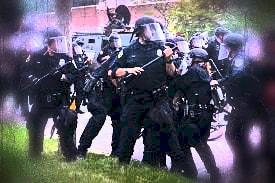
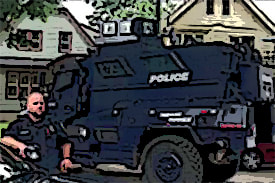
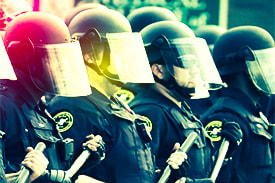
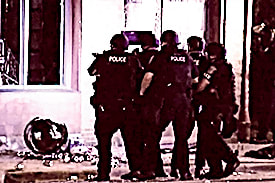
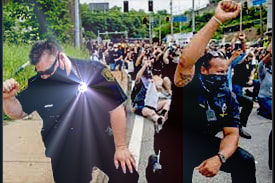

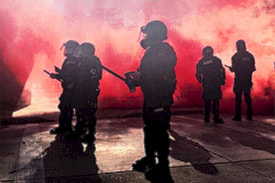

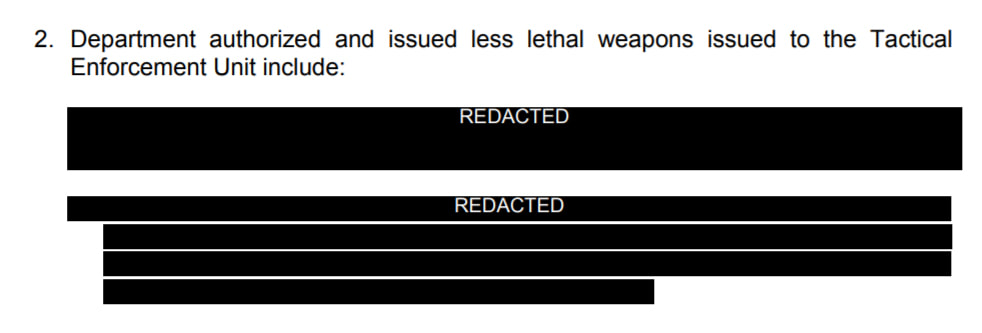
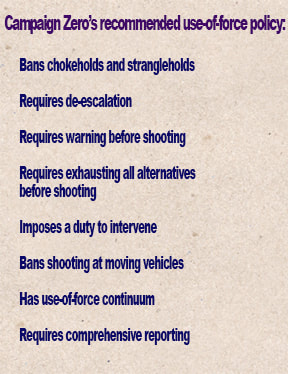


 RSS Feed
RSS Feed